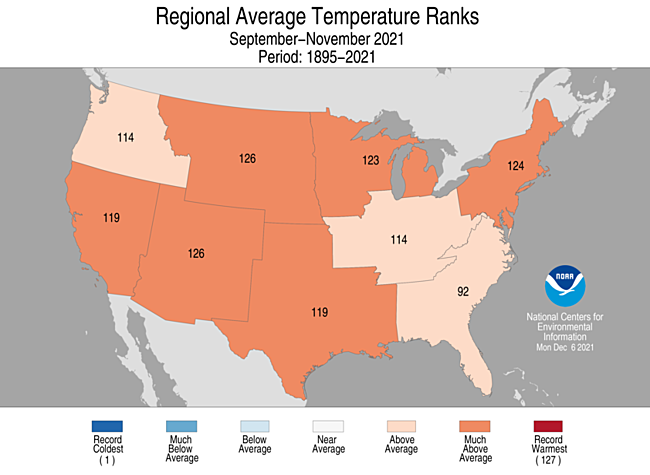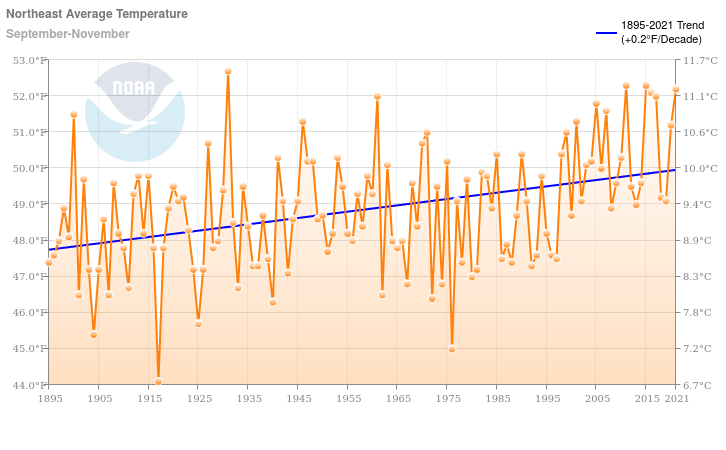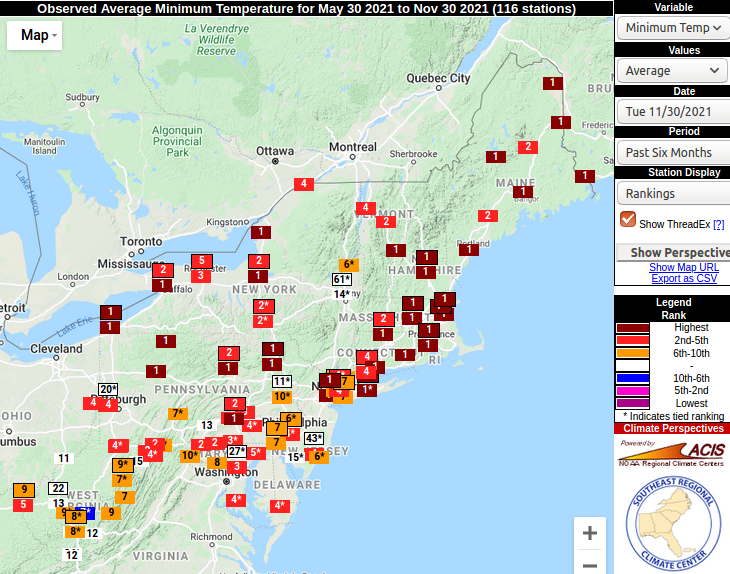December 8, 2021
Climate System Research Center
Climate analysis for autumn and summer-autumn 2021.

Meteorological autumn (Sep-Nov) was the fourth warmest on record for the Northeast U.S. Maine, Massachusetts, and Rhode Island saw their third warmest autumn. A record warm October paced the autumn anomaly.
It was the third warmest autumn for the contiguous U.S.
Four of the five warmest autumns over the Northeast have occurred in the last 11 years (2011, 2015, 2021, 2016). The season is warming at a rate of 0.2 oF per decade since 1895.

For minimum temperature, the Northeast experienced the highest average on record for both autumn and the summer-autumn period (Jun-Nov). Minimum temperatures for summer-fall were record warm at most sites in New England, including Boston, Providence, Worcester, and a majority of locations in Maine and New Hampshire. This year Boston had its warmest summer on record, and its year-to-date average temperature is on pace to be warmest ever recorded.

Autumn was wetter than normal across most of the region. Massachusetts received 16.5 inches of rain, the most of any state in the Northeast. This is 3.5 inches above normal, making for the 12th wettest autumn on record.
Information accessed from the NOAA National Centers for Environmental Information and the Northeast Regional Climate Center. Period of record is 127 years since 1895.
